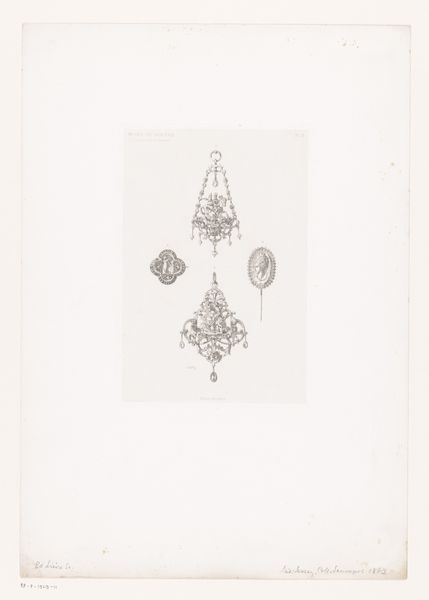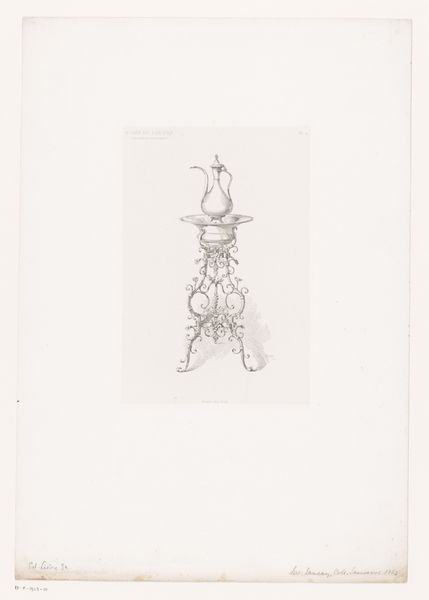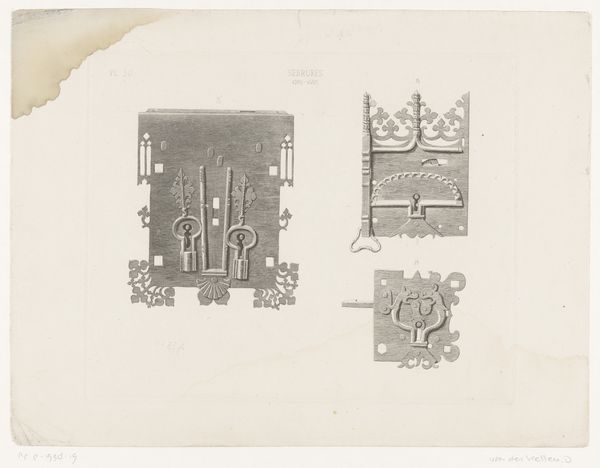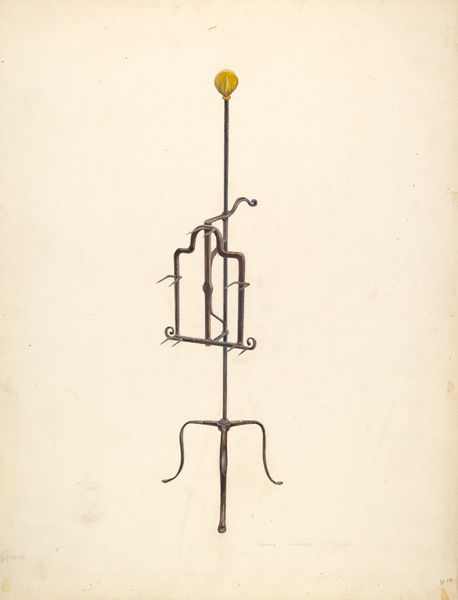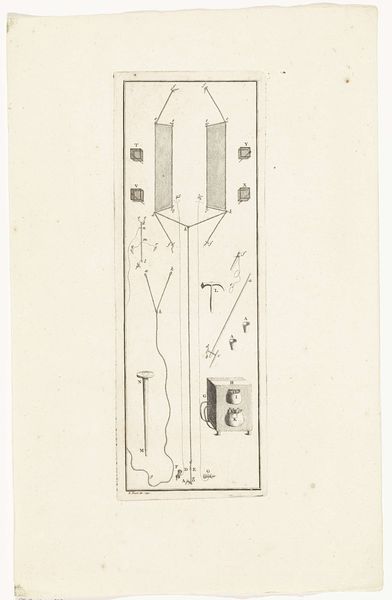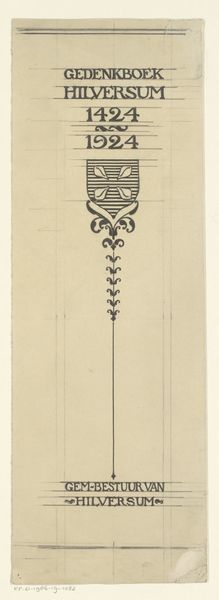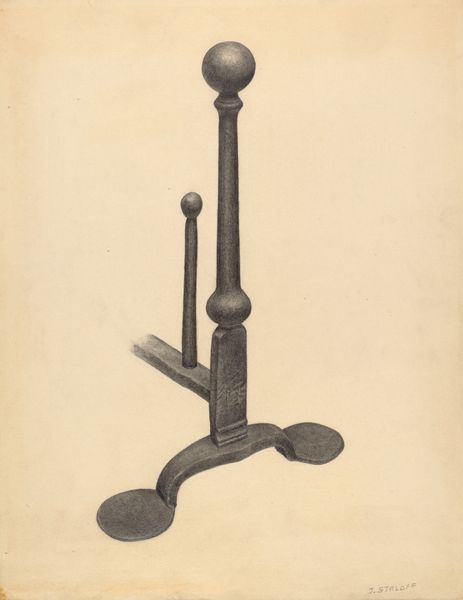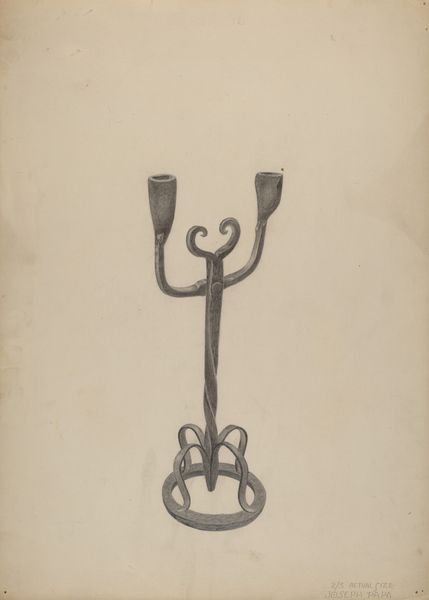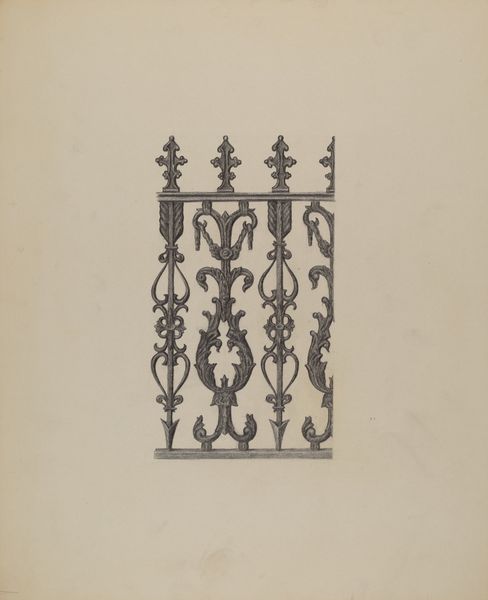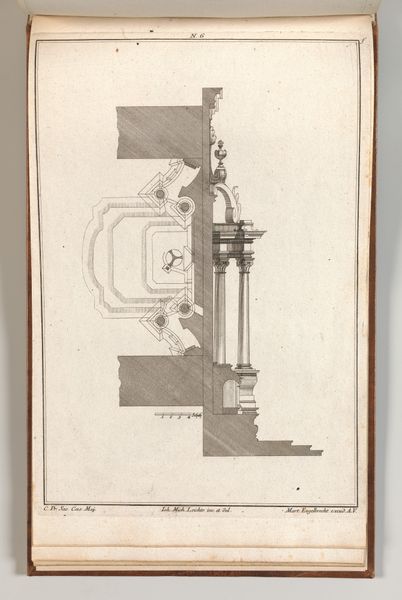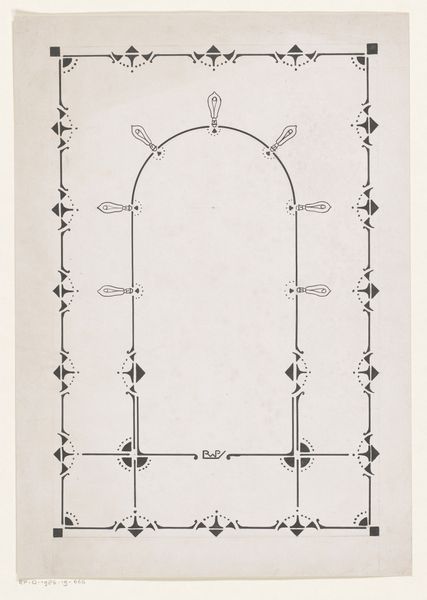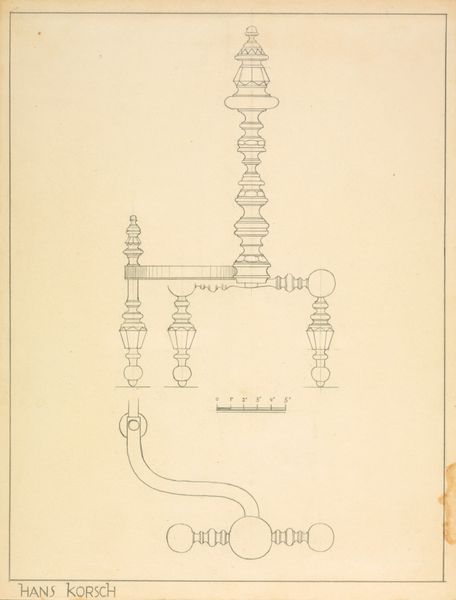
drawing, graphic-art, print, paper, engraving
#
drawing
#
graphic-art
# print
#
paper
#
form
#
line
#
academic-art
#
engraving
Dimensions: height 229 mm, width 154 mm
Copyright: Rijks Museum: Open Domain
Editor: Here we have “Drie Sleutels,” or “Three Keys,” an engraving on paper by Edouard Lièvre, created in 1863. They look so ornate and symbolic. How do you interpret this work? Curator: Keys, aren’t they fascinating? Consider their multifaceted nature. On one hand, they represent security, control, access—think of them as keepers of secrets. On the other, they promise freedom, opportunity, and perhaps even the unlocking of one's own potential. Lièvre presents not just any keys, but elaborately designed ones. Editor: They look like keys to a castle! Curator: Precisely. In many cultures, keys are potent symbols. Historically, the passing of keys symbolized the transfer of power, or perhaps, responsibility. Each of these keys bears unique embellishments, don’t they? It suggests that they unlock different realms – material, spiritual, intellectual, perhaps even emotional. What do you think of that? Editor: I like that! Each key could have opened up different possibilities, or held a different weight of responsibility. They look both powerful, and really beautiful! Curator: It makes you wonder what was being secured, or what was waiting to be discovered at that time in the 19th century. In the end, images of objects can teach us as much about a culture as portraiture. Editor: I never thought about keys as such rich symbols! Thanks, that really unlocks the artwork for me. Curator: My pleasure. Symbols connect us to both our past and present.
Comments
No comments
Be the first to comment and join the conversation on the ultimate creative platform.
